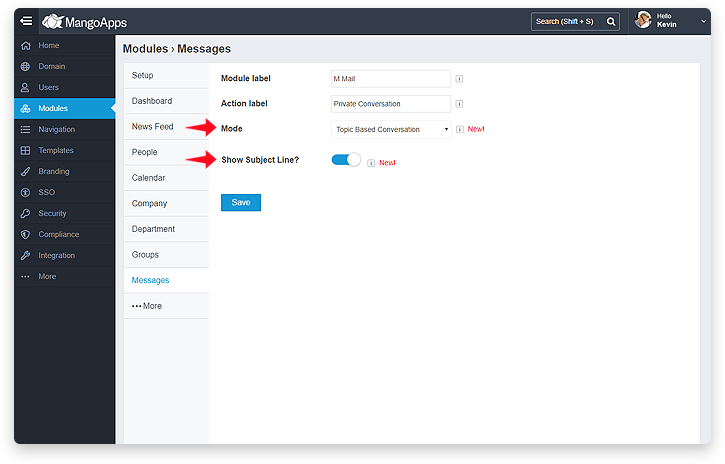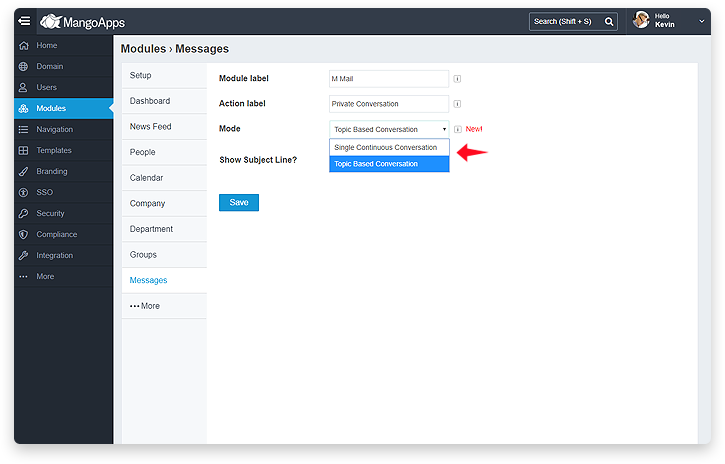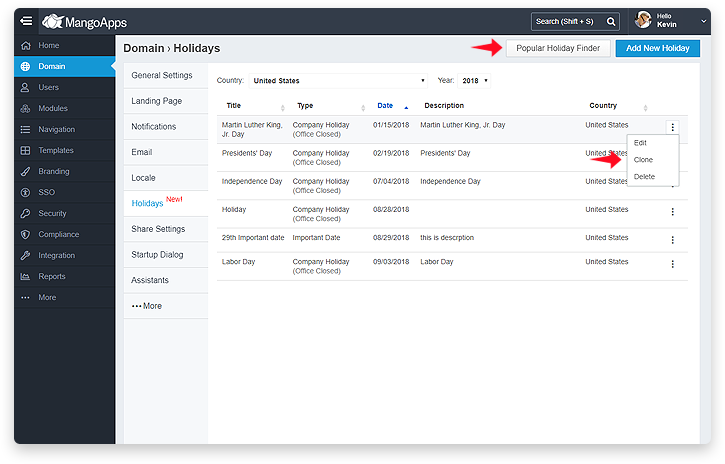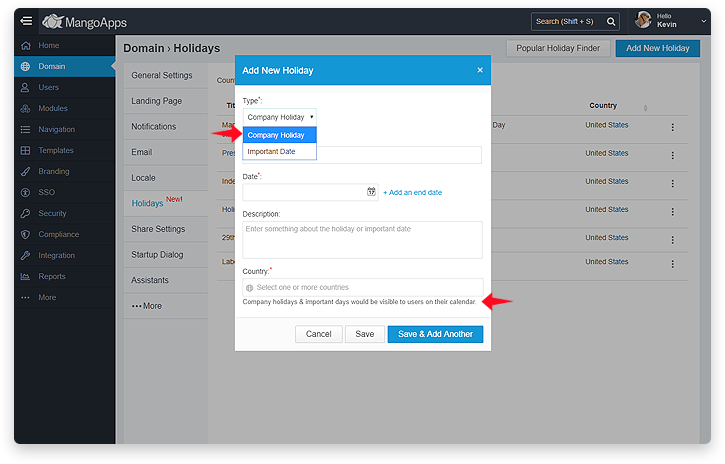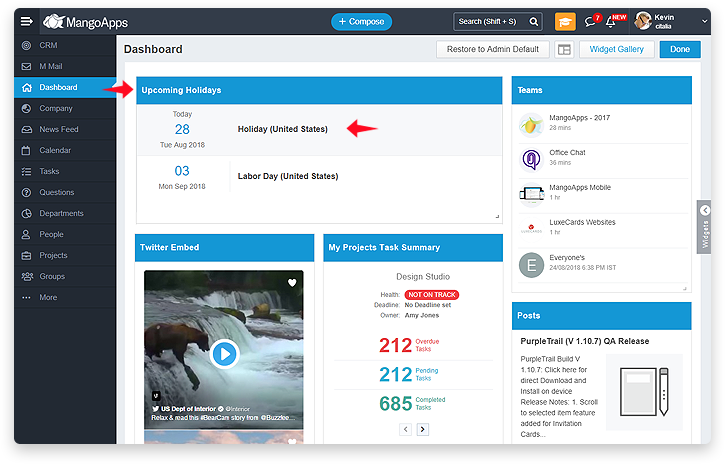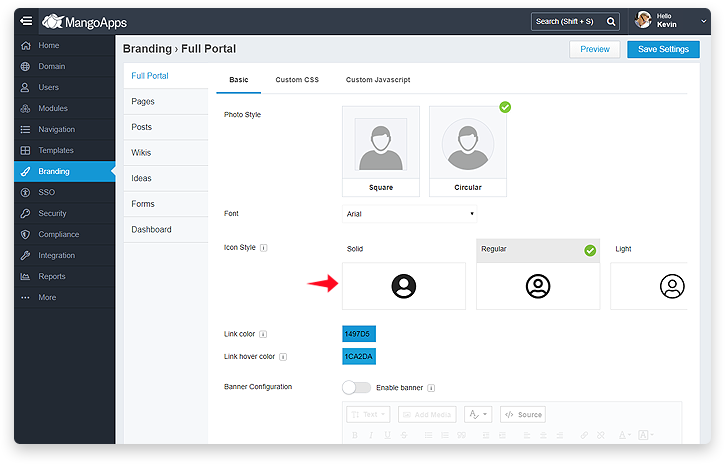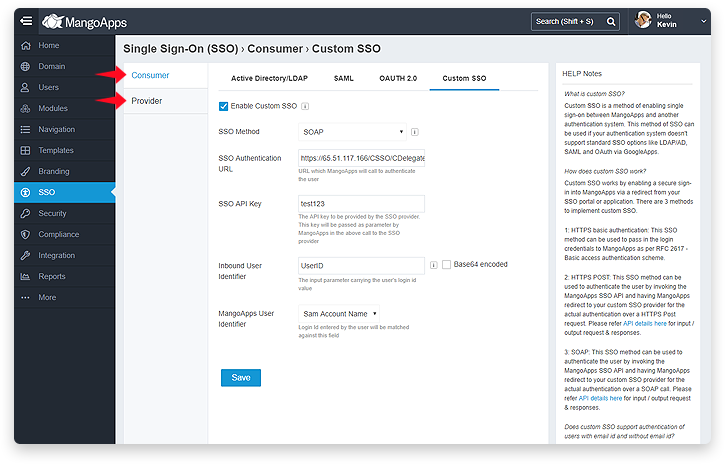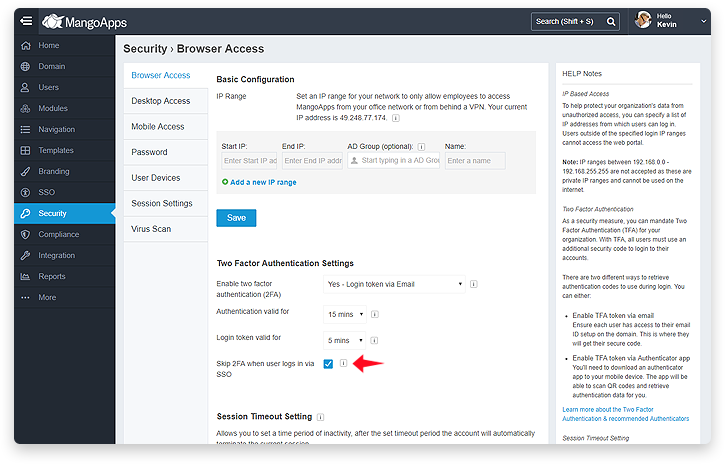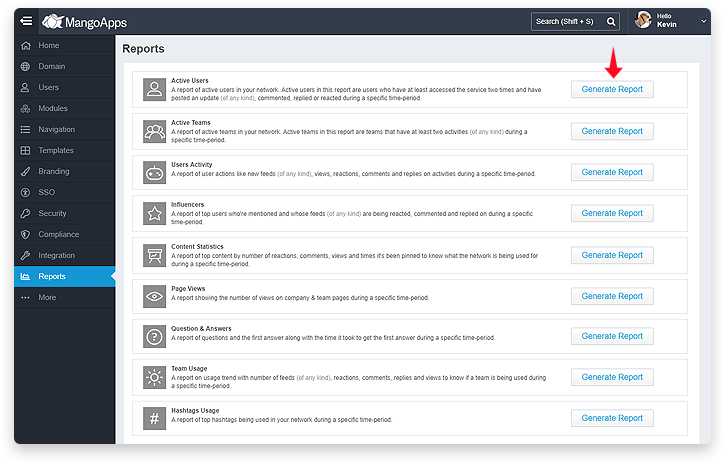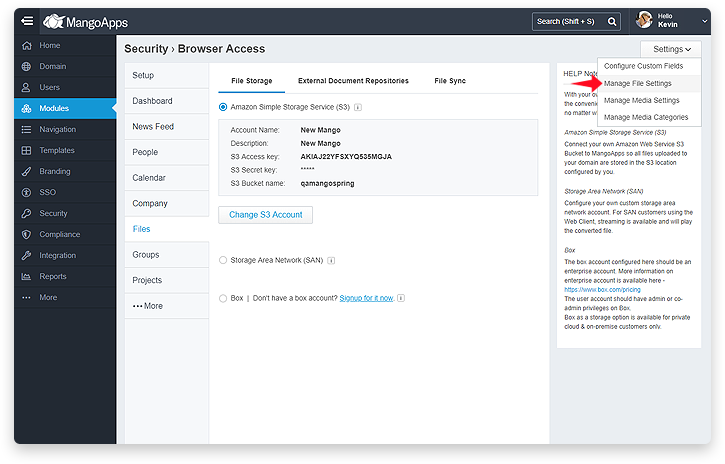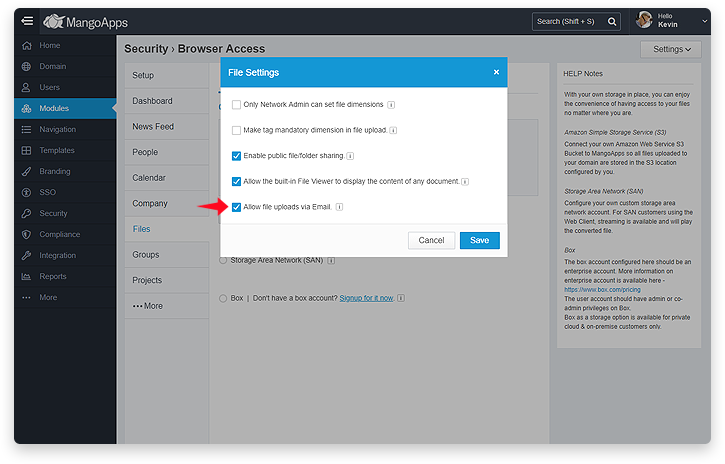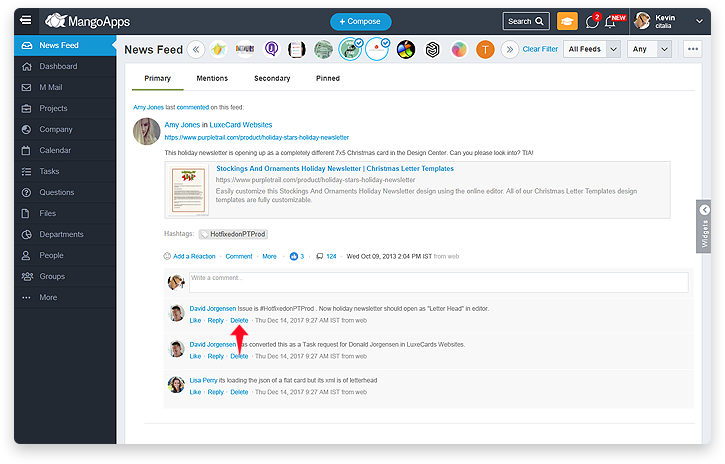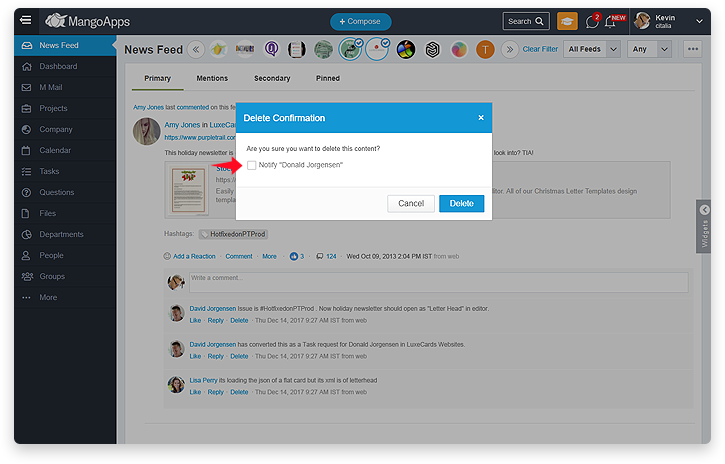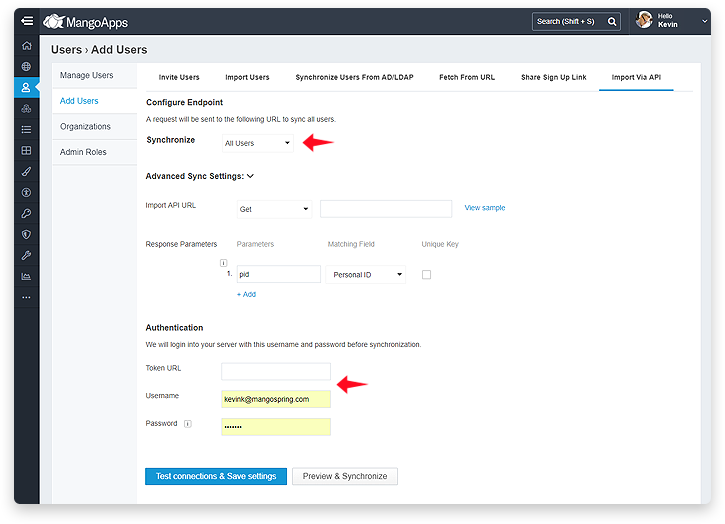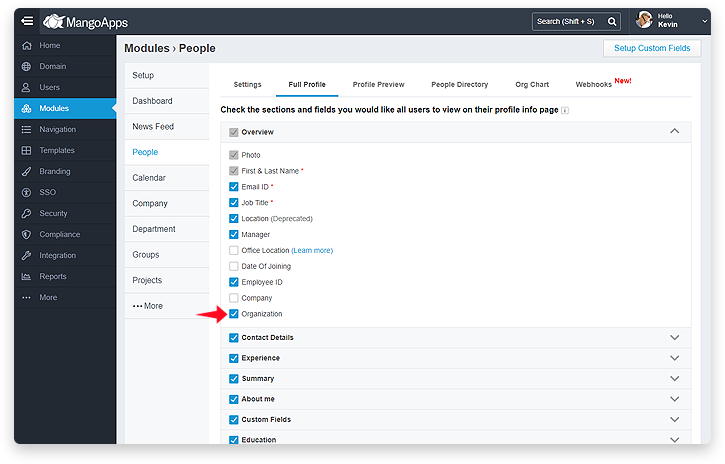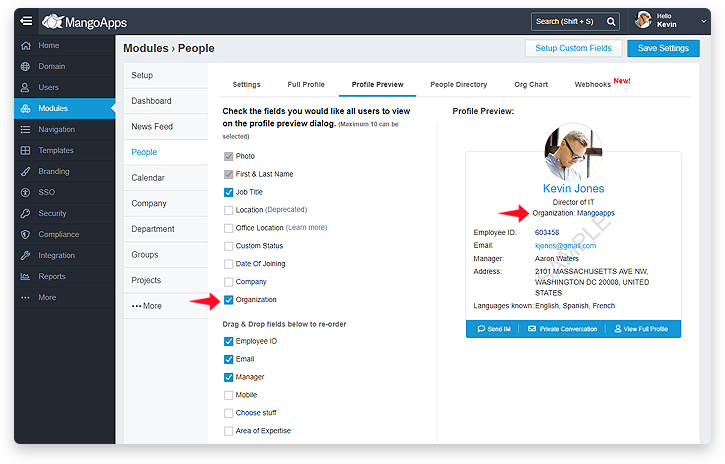What’s New For Domain Admins
Here is the list of new admin features & controls that are available in this release
-
Private Message New Settings
- There are 2 new settings in private messages that domain admins can setup for all users in the domain.
- Mode: This allows domain admins to choose from these 2 options
- Topic Based Conversation – This enables email like private messages with a subject line among a set of users
- Single Continuous Conversation – This enables a chat like single conversation thread among a set of users
- Show Subject Line: This enables having a subject line for private messages. This setting is available when mode is set to ‘Topic Based Conversation’ only
- Mode: This allows domain admins to choose from these 2 options
- All settings apply to both network & guest users
- There are 2 new settings in private messages that domain admins can setup for all users in the domain.
-
Calendar New Settings
- Who can create company events. There are 2 options
- Any network user can create
- Only domain admins, intranet admins and a specific set of people can create
- Who can create team events
- This is setup by the team admin at a per team level.
- The 2 options are
- Any team member can create (including guest users)
- Only team admins can create
- The 2 options are
- Who can create meetings
- Any network user can create a meeting
- Who can create appointments
- Any network user can create an appointment
- This is setup by the team admin at a per team level.
- Who can create company events. There are 2 options
-
Holidays/Important Date Improvements & New Holidays Widget
- Holidays have been moved to be directly under Domain on the admin portal
- Holidays & important dates that you add (or edit) from now onwards require a country to be associated to them
- To make it easier to add holidays there is a new popular holiday finder in which you select the country and year to get a list of popular holidays. You can then pick the holidays that are applicable for your company and add them to everyone’s calendar. There are about 50+ countries that the popular holiday finder currently supports.
- The view of holidays & important dates for the domain admins now has 2 filters
- Country
- Year
- You can now edit or clone any holiday or important date from the list
- Company holidays & important dates added here are seen by users with matching country (derived from user’s office location) on their calendar
- As before the users receive an automatic notification from MangoApps a day before the company holiday or important date
- There is a new widget called Upcoming Holidays that you can add to everyone’s dashboard that shows the list of upcoming holidays based on the user’s country (derived from user’s office location)
-
Branding Enhancements
- For the Icons used in the MangoApps web app you now have a choose of 3 styles.
- Solid
- Regular
- Light
- By default icons are set to be regular
- For the Icons used in the MangoApps web app you now have a choose of 3 styles.
-
SSO Enhancements
- SSO configuration for MangoApps as a consumer and as a provider have been consolidated under the SSO module now
- New setting added for OAuth based SSO to auto-redirect the user to the provider’s login page when they visit their MangoApps site.
-
2FA Enhancement
- You can now control if 2nd factor authentication (2FA) is activated when the users uses SSO to login into MangoApps.
- Default the 2FA is OFF for SSO (SAML & OAuth)
-
Reporting Improvements
- Domain admins can now select a custom date range for any report in addition to the pre-defined date ranges as part of generating a report
- The network-wide content report has been enhanced to include a secure link to the actual content in MangoApps
-
File Upload Via Email Settings
- Files module has a new setting to allow users to upload files to a folder using it’s email address. By default this setting is ON.
- Audit log would track any changes made to this setting
-
Delete Someone’s Feed With Notify/Don’t Notify Options
- As a domain admin when you delete someone’s feed you will now have an option to delete & notify or delete & don’t notify the user who posted it
- If you check the notify option, the user who posted the feed would get a private message with a snippet of the content that was deleted.
-
2 Way Profile Sync Via Webhooks
- As a domain admin you can now define secure HTTPS callbacks to a HR information & payroll system interested in being notified when user information in MangoApps changes. These are called outgoing webhooks and can be configured under Modules > People > Webhooks
- Outgoing webhooks can be triggered when one or more of the following conditions become true.
- A new user is created in MangoApps
- A user profile information is updated
- A user is activated or de-activated
- MangoApps now also supports incoming webhooks through which MangoApps can be notified everything the user profile info in the HR system changes
- As a domain admin you can map the request & response webhook fields to MangoApps user fields and this enables MangoApps to integrate with any system that supports webhooks
- Webhook communication is secured using OAuth based password authentication and is over HTTPS
- Additional IP based access security can be configured to allow incoming webhooks to be from a set of white listed IP addresses. This can be done under Integration > Webhooks
-
Import Users Via API
- You can now auto-provision users and keep their profile information upto date in MangoApps by integrating with your HR information & payroll system using a RESTful API
- You can configure MangoApps to
- Perform a one-time import from your HR system -or-
- Perform a auto-sync from your HR system when the user logs in
- Auto-sync from your HR system can further be setup to be done
- Only when the user logs in for the first time -or-
- Every time the user logs in
- As a domain admin you can map the request & response API fields to MangoApps user fields and this enables MangoApps to integrate with any system that provides an API
- As a domain admin you have an option to preview the data prior to performing the one-time synch of users and get an opportunity to review the information
- API communication is secured using OAuth based password authentication and is over HTTPS
-
Organization Field On Profile
- Domain admins can now turn on / off organization on the user profile for type 1 domains also
- When turned on, this field is available on user profile, office card and in people directory to filter users belonging to a particular organization


